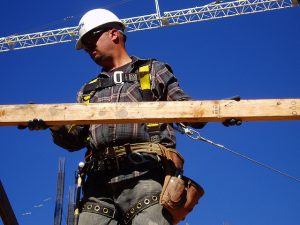 According to the Occupational Safety and Health Administration (OSHA), there are approximately 5.2 million work-related injuries and illnesses each year. While the vast majority of these incidents involve nothing more than minor cuts, bruises and similar non-life-threatening injuries, others are more severe. The good news, however, is that employers can promote greater safety in the workplace by following some simple steps.
According to the Occupational Safety and Health Administration (OSHA), there are approximately 5.2 million work-related injuries and illnesses each year. While the vast majority of these incidents involve nothing more than minor cuts, bruises and similar non-life-threatening injuries, others are more severe. The good news, however, is that employers can promote greater safety in the workplace by following some simple steps.
Personal Protection Equipment
Workers should be given the appropriate personal protection equipment (PPE) for their respective job. Some employers place this burden on their workers, but it’s actually the employer’s responsibility. OSHA states that employers must provide their workers with the appropriate PPE. Failure to do so could result in a fine — not to mention an increased risk of injury and/or illness.
Give Workers Breaks
This may sound like common sense, but it’s still worth mentioning that workers should be given regular breaks during their shifts to help protect against injury. “Overexertion” constantly ranks among the most common types of work-related injuries. When workers are forced to perform the same task over and over, it places them at risk for muscle strains, sprains, tendinitis, and similar overexertion injuries. To protect workers from injuries such as this, make sure they are given breaks throughout their shift. A short 10-minute break every couple of hours can make a world of difference in terms of workers’ safety and well-being.
Keep Floors Clean and Free of Obstruction
Falls from same level are yet another all-too-common type of work-related injury. While there’s no fool-proof way to prevent all same-level falls from occurring, employers can reduce the likelihood of them by maintaining clean, obstruction-free floors. Something as seemingly harmless as a power drill left on the ground may pose a serious risk to workers’ health. If a worker happens to step on it, he or she could lose their balance and fall to the ground.
Create a ‘Buddy System’
What in the world is a buddy system and why should you create one? Well, it’s exactly what it sounds like: a system in which two workers watch over each other, looking for signs of stress, injury, or illness. Buddy systems are particularly effective during the hot summer months when there’s an increased risk of dehydration and heat exhaustion. If a worker notices his or her buddy is fatigued, they should tell the employer.
No tags for this post.